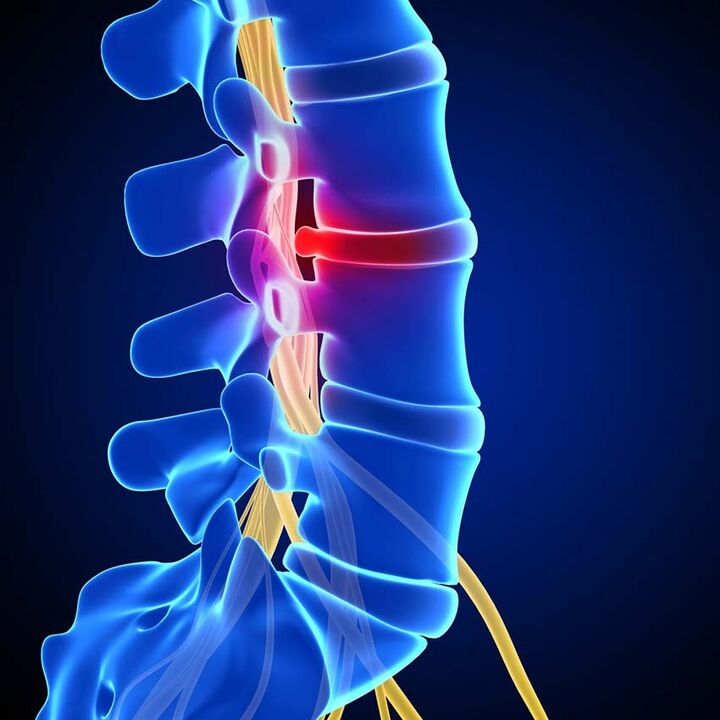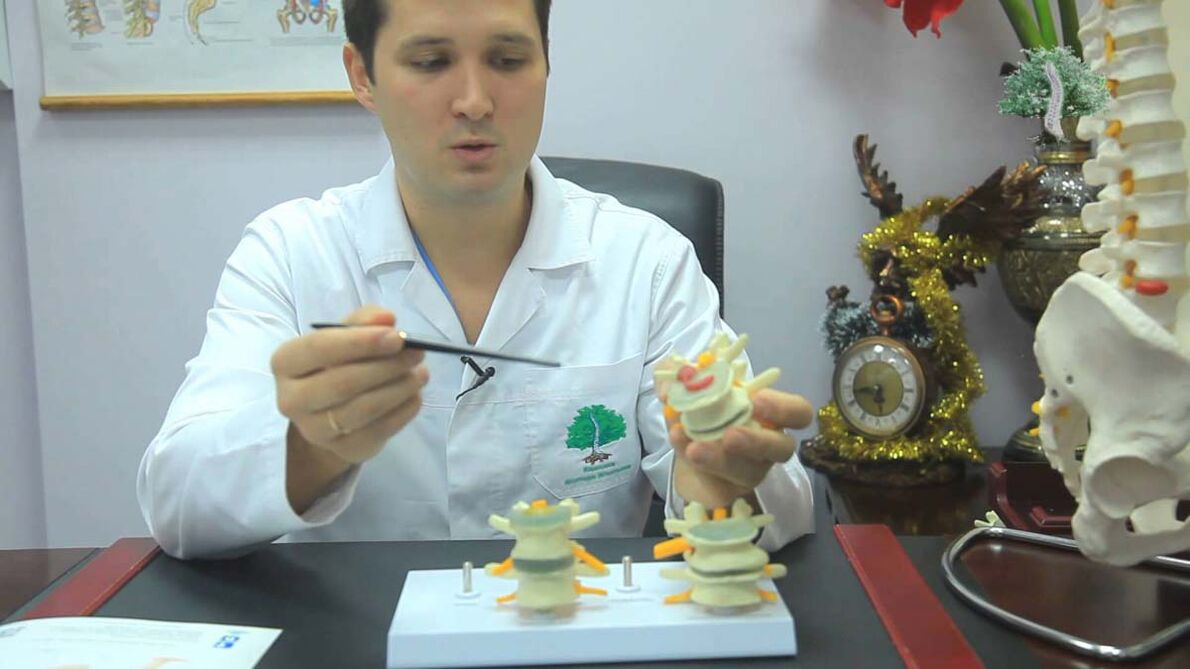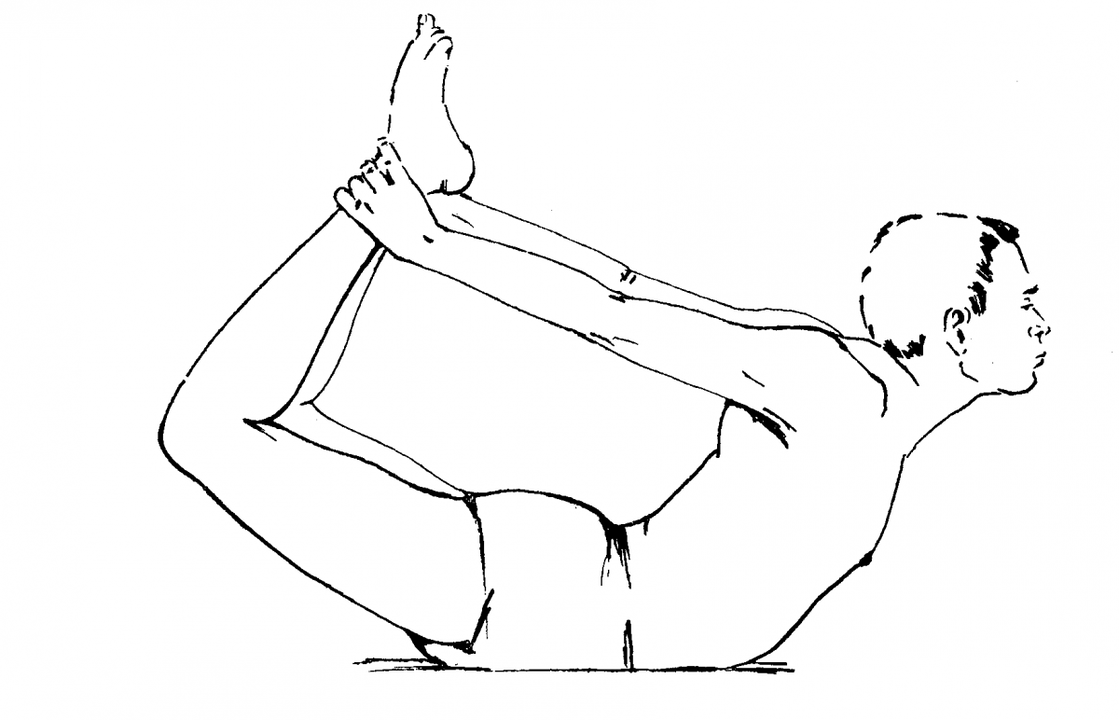Osteochondrosis of the lumbar spine is expressed in the previously mentioned dystrophic damage to the back, damage to the core of the intervertebral disc and deformation of the intervertebral joints against the background of disorders of the ligament apparatus. In this pathological process in the final stages of the disease, blood vessels are involved, and even the nervous system.
What is lumbar osteochondrosis?
Osteochondrosis of the lumbar spine is one of the most common diseases of the musculoskeletal system in the world. Irregular pain syndrome in a defined area is felt in up to sixty percent of the population, and every tenth population is diagnosed with osteochondrosis in one form or another, almost half of the cases being due to defeat of the lumbar and sacral regions.

The disease quickly "rejuvenates", sometimes occurs even in adolescents and children - this is the fault of an inactive lifestyle / occupation, as well as excessive interest in computer games, complete lack of physical activity - sports and active games are replaced by stayinglong on the PC.
However, osteochondrosis of the lumbar spine can also occur due to excessive stress, especially if exacerbated by being overweight. The problem is due to incorrect posture, as well as back injuries, non -adherence to daily regimens, and systematic malnutrition.
Negative factors that accelerate the formation of prerequisites for the emergence of osteochondrosis of this type are chronic lack of sleep, stress, slowing down metabolic processes in the body. A separate category is professional athletes.

A number of experts state that, in some cases, osteochondrosis is the result of a person's genetic predisposition: the intervertebral disc, at the same time, has a loose porous structure and under the influence of negative pathogenic factors is very quickly destroyed, the disease develops rapidly and is diagnosed only in the final stages, sometimes irreversible.
A special risk group is people suffering from rheumatoid arthritis, as well as ankylosing spondyloarthritis, which provokes the development and complicates the course of the autoimmune diseases mentioned above.
The first signs. Symptoms of lumbar osteochondrosis
The main symptoms of the disease described above, of course, include pain syndrome. Prolonged pain in the lumbar region of moderate intensity, can be replaced by a strong "lumbago", after a physically active childbirth or being in an uncomfortable position. As a rule, in the supine position, the pain syndrome practically does not appear or disappear at all.

With exacerbations, as well as strenuous physical exercise, hypothermia or non -physiological movements, the pain syndrome loses its place in the lower back and enters the pelvic area as well as the legs.
In detail, patients experienced the following pathologies:
Nerve root compression
- Root lesions L 1-2: pain in the local area, loss of sensation in the inner thighs and groin.
- L-5 lesions: lumbar pain in the lower back, irradiation to the thumb.
- S-1 lesions: pain and numbness on the outer surface of the thighs, legs, temporary loss of reflexes on the soles of the feet and lower back.
Arterial lesions
Local damage to the DH arteries causes:
- Frequent numbness of the legs / lower back.
- Loss of sensitivity in the genital area.
- In rare cases, loss of pelvic motor function.
Vascular compression ischemia
Violation of blood supply to the spinal cord and additional peripheral structures causes "thinning" of the structure of the intervertebral disc and, therefore, abnormal movement of the spine, the formation of osteophytes and neoarthrosis.
Compression myelopathy
Narrowing of the spinal canal causes periodic paroxysmal weakness in the extreme part, a painful "lumbar" syndrome in the lower back with retreat to the back of the thigh. Against this background, hypotrophy / hypotension of the gastrocnemius / gluteal muscles develops, loss of plantar, anal and Achilles reflexes, leg paresis.
Treatment of lumbar spine osteochondrosis

It is possible and necessary to treat this disease. Naturally, in this case, only complex therapy will help, which aims to reduce the symptoms of autoimmune diseases, restore the structure of the spine and prevent the problem from recurring.
Complex therapy of the above diseases includes:
- Taking medicine.
- Restriction injection.
- Gymnastics and exercise therapy.
- Massage and manual therapy.
- Physiotherapy.
Preparations for lumbar osteochondrosis
- Pain reliever.
- Restoring chondroprotectors.
- Vitamins. Optimum - group B.
- Injections. Anesthetics, cartilage restorers and normalization of blood microcirculation.
- Local funds. Corticosteroids as well as anti-inflammatory drugs.
Gymnastics for osteochondrosis of the lumbar spine
An important element of spinal rehabilitation. All procedures are developed individually, aimed at relieving muscle pain and cramps, normalizing blood circulation, and restoring intervertebral disc work.
Massage for osteochondrosis of the lumbar spine
Massage is an indispensable component of disease therapy. It helps relax and train the lower back muscles, encourages the cartilage tissue repair process, and relieves pain.
Often, with the diseases described above, massage therapy, acupressure, hardware, vacuum cans and connective tissue are used.
Physiotherapy
As a rule, physiotherapy is prescribed for patients with osteochondrosis of the lumbar spine only at the stage of remission of the disease, after overcoming the period of exacerbation of the problem.
Modern and classic techniques:
- Acupuncture. Exposure to acupuncture points on the back with a special needle.
- Stretches. The classic technique of stretching the spine on a massage-pull sofa, performed by a qualified chiropractor.
- Electrophoresis. Known since the 60s, a complex non-operational method for influencing problematic outdoor areas.
- Traction decompression. Automatic hardware spine stretching in a special medical complex.
- Shock wave therapy. Use of infrasound waves for the treatment of osteochondrosis.
- Osteopathy. A complex technique that combines elements of chiropractic, massage and therapeutic orthopedics.
- Magnetopuncture. Direct effects of alternating magnetic fields on the spine.
- Laser puncture. Treatment of acupuncture points with radiation-induced radiation.
- Electrical stimulation. Application of small alternating currents in the affected area.
Prevention of lumbar osteochondrosis

After undergoing complex treatment and physiotherapy, supportive therapy is needed for a long period of time: during this period, the spine is still weak and in need of support. In addition, prevention aims to prevent the occurrence of osteochondrosis of the lumbar spine. Main activities:
- Regular balanced training, preferably under the supervision of a qualified veterinarian.
- Weight normalization: quite often, overweight people are an exacerbating factor influencing the formation of osteochondrosis.
- Dietary correction. A regular diet should include foods rich in elements such as calcium and magnesium. In this case, it is advisable to exclude foods that are too fatty and unhealthy, as well as other foods that are not included in the definition of healthy food.
- Rejection of bad habits. Alcohol and smoking intensify all the destructive processes in the body, this is also true for the occurrence of osteochondrosis.
- Proper body posture. Make sure you monitor your body posture, especially if your work is always at the computer or other sitting activities. Also observe your child - how and for how long he sits. Proper normal posture will allow you to prevent the onset of scoliosis and, therefore, on osteochondrosis in the future.
- Use the right shoes, clothes and accessories, avoid wearing normal weights. The wrong shoe, a heavy bag on the shoulder, serves as a loader - all these factors sometimes have a decisive influence on the beginning of the formation of destructive processes in the spine.
Question answers
What kind of pain occurs with this type of osteochondrosis?
Osteochondrosis of the lumbar spine is characterized by several types of pain. First of all, this is an unpleasant sensation in the lumbar region, lasting for a long time and increasing significantly with increasing motor activity and manpower of a person. This type of pain disappears if the body is given a horizontal position for at least 15-20 minutes.
If the disease is exacerbated by hypothermia, prolonged heavy physiological stress or sharp "everting" movements, then in addition to the background pain mentioned above, there is also a "shooting" effect, which is localized in the pelvic area and radiates to the lower extremities.
Is gymnastics useful for this osteochondrosis?
Therapeutic exercise therapy gymnastics allows you to combine the therapeutic effects of complex diseases, develop some of the intervertebral components in the joints, as well as relax / train the muscles in the lumbar region. In addition, a proper regular massage helps relieve the unpleasant pain associated with osteochondrosis.
A set and list of specific exercises, number of approaches and frequency of exercises are made for you by the attending physician: he will take into account the stage of the disease, a list of possible contraindications and restrictions, the patient's condition and suggest methods for using exercise therapy in practice.

























